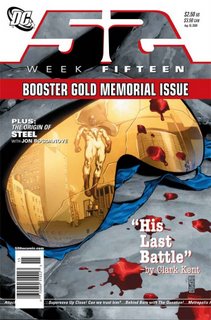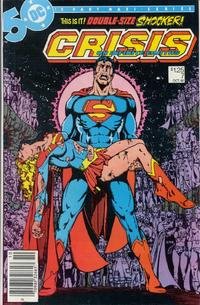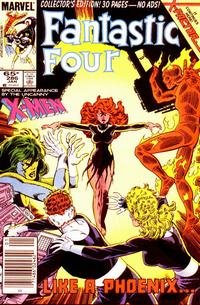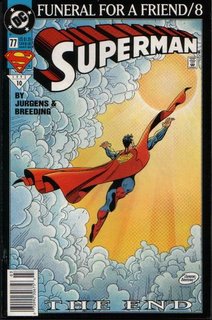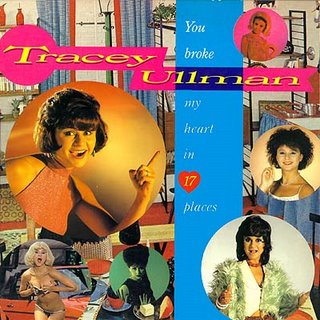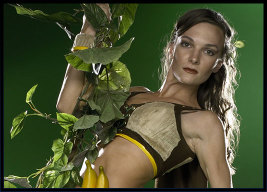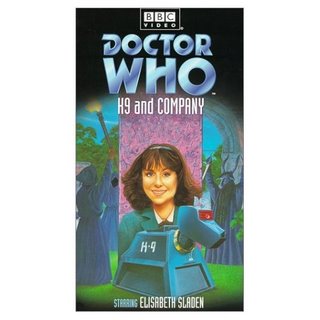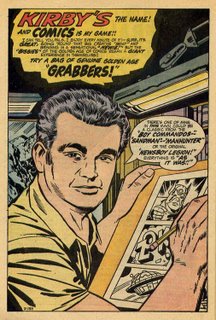
I feel somewhat shamed for missing the chance to join in various Jack Kirby tributes taking place across the comics blogosphere on what would have been his 89th birthday. (That was Monday, BTW.) But it's still the same week, so maybe I can kick in a belated tribute.
Jack Kirby was arguably the finest artist in the comics medium, certainly the best I've ever come across. Modern artists can achieve more photorealistic work, with more sophisticated shading, but this sometimes takes away from the flow between panels, and since comics don't rely on newsstands or five-and-dime stores for sales anymore, they can run late if an artist needs to take some extra time. Kirby seemingly never missed a deadline, and turned out thousands upon thousands of pages solely by virtue of sitting down at his drawing board and staying there for as long as it took.
 More importantly, his art strikes the perfect balance between beauty and storytelling. His action scenes leap at the reader using a combination of skewed angles and perspective tricks that became a favored technique of the genre (which has always struggled to depict action and movement in a medium that is by nature static.) As if that wasn't enough, his art is often just plain beautiful to look at. Working at Marvel in the sixties, Kirby's style became more abstract, his figures blockier, his lines more angular. The results are unique; characters have recognizable proportions and believable poses, but seem stronger, more vibrant, and just a wee bit weirder. Kirby was also fond of strange and vaguely expressionistic effects, photo
More importantly, his art strikes the perfect balance between beauty and storytelling. His action scenes leap at the reader using a combination of skewed angles and perspective tricks that became a favored technique of the genre (which has always struggled to depict action and movement in a medium that is by nature static.) As if that wasn't enough, his art is often just plain beautiful to look at. Working at Marvel in the sixties, Kirby's style became more abstract, his figures blockier, his lines more angular. The results are unique; characters have recognizable proportions and believable poses, but seem stronger, more vibrant, and just a wee bit weirder. Kirby was also fond of strange and vaguely expressionistic effects, photo collage, gadgets that were several orders of magnitude more elaborate than they needed to be, and "Kirby Krackle", a nifty effect whereby "cosmic energy" and pillars of smoke and similar things were represented by wild, fractal-esque patterns of solid dots (sometimes called, natch, Kirby Dots.) A certain joy of drawing comes forth in every page, as well as the ingenuity of a mind that just plain sees the world in a different way.
collage, gadgets that were several orders of magnitude more elaborate than they needed to be, and "Kirby Krackle", a nifty effect whereby "cosmic energy" and pillars of smoke and similar things were represented by wild, fractal-esque patterns of solid dots (sometimes called, natch, Kirby Dots.) A certain joy of drawing comes forth in every page, as well as the ingenuity of a mind that just plain sees the world in a different way.Kirby also wrote, and created more ideas and characters than could possibly be listed. It's still not quite clear about the exact extent of his collaboration with Stan Lee when the two worked together in the Sixties; the general consensus seems to be that Lee, who got the official writing credit, came up with the basic idea for each issue and wrote the final dialogue, and Kirby worked out the beats of the story in between. Certain characters, like the Silver Surfer, are uncontestedly his. When Kirby left Marvel, he began to work as both plotter and penciler, leading us to what is my personal favorite bit of his body of work- the Fourth World.
 The Fourth World was an umbrella name for 4 separate titles written and drawn by Kirby for DC: NEW GODS, THE FOREVER PEOPLE, MISTER MIRACLE, and for various reasons, a run on SUPERMAN'S PAL, JIMMY OLSEN that took the title from light fantasy-comedy to high action insanity. Together the four books told the story of a conflict between the super powered "Gods" of New Genesis and Apokolips, a war in the Heavens coming to Earth as Apokolips' leader searched for an equation in people's minds that would allow him to control all living thought. Ramping up the "mythology" aspect of the superhero genre to previously unheard-of levels, Kirby's Fourth World project was cut down early (MISTER MIRACLE, the most popular series, running only 18 issues), but it's since become a cult favorite and a major part of the DC Universe. And he didn't stop there. Kirby appreciated that one of the strengths of the superhero genre was its ability to contain a wide variety of bizarre and fantastic ideas, of which he had plenty. He embodied Death as a black man in multicolored armor flying on skis. He had an entire planet sitting in a man's basement, inhabited by classic movie monsters. A super escape artist battled a sedentary being called "The Lump" in the confines of his overactive mind. Superman fought a giant green Jimmy Olsen. Good times were had by all. Some day, I tell myself, I'm going to review each and every issue of the Fourth World cycle in order of publication. And then I will learn Arabic and begin training as a sushi chef.
The Fourth World was an umbrella name for 4 separate titles written and drawn by Kirby for DC: NEW GODS, THE FOREVER PEOPLE, MISTER MIRACLE, and for various reasons, a run on SUPERMAN'S PAL, JIMMY OLSEN that took the title from light fantasy-comedy to high action insanity. Together the four books told the story of a conflict between the super powered "Gods" of New Genesis and Apokolips, a war in the Heavens coming to Earth as Apokolips' leader searched for an equation in people's minds that would allow him to control all living thought. Ramping up the "mythology" aspect of the superhero genre to previously unheard-of levels, Kirby's Fourth World project was cut down early (MISTER MIRACLE, the most popular series, running only 18 issues), but it's since become a cult favorite and a major part of the DC Universe. And he didn't stop there. Kirby appreciated that one of the strengths of the superhero genre was its ability to contain a wide variety of bizarre and fantastic ideas, of which he had plenty. He embodied Death as a black man in multicolored armor flying on skis. He had an entire planet sitting in a man's basement, inhabited by classic movie monsters. A super escape artist battled a sedentary being called "The Lump" in the confines of his overactive mind. Superman fought a giant green Jimmy Olsen. Good times were had by all. Some day, I tell myself, I'm going to review each and every issue of the Fourth World cycle in order of publication. And then I will learn Arabic and begin training as a sushi chef.I don't think I actually know enough about Kirby's work and life to do the best tribute. But I will say this- he was a master, never adequately compensated for all he did for American comics. Talent like that comes along once in a lifetime.
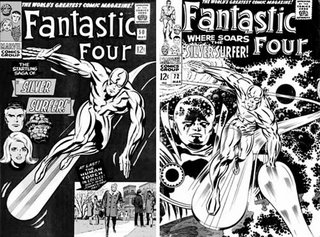
For additional info and pretty pictures, please visit the Jack Kirby Museum & Research Center online. Long live the King.

